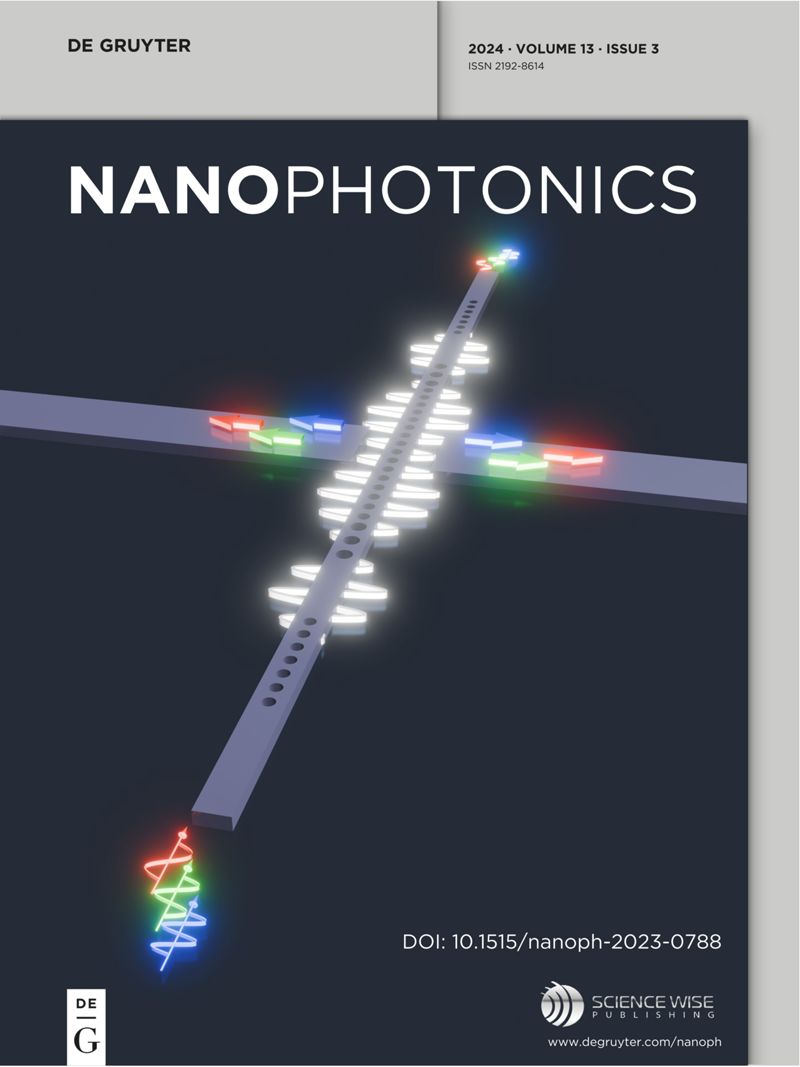III-V纳米线间光广播的神经网络连接
IF 6.6
2区 物理与天体物理
Q1 MATERIALS SCIENCE, MULTIDISCIPLINARY
引用次数: 0
摘要
生物神经网络的功能依赖于节点之间的大量连接,这对人工实现来说是具有挑战性的。一个激进的解决方案是用人工神经元之间的信号广播来取代物理布线。我们通过在准二维波导中发射/接收III-V半导体纳米线神经元来探索这一概念的实现。它们以各向异性模式传播光,纳米线中的特定区域对激发和抑制光信号敏感。然后可以使用几何光吸收/发射模式来定制节点之间连接的权重。通过详细的仿真,我们确定了基于纳米线之间的旋转和分离的连接强度。我们的研究结果表明,复杂的权重分布是可能的,这表明特定的神经元几何模式可以根据神经网络的需要实现高度可变的连接。一个重要的设计参数是将波长与网络的特定物理尺寸相匹配。为了证明其适用性,我们使用具有随机角取向的纳米线的六角形模式来模拟水库神经网络,展示其进行混沌时间序列预测的能力。该设计兼容硅衬底集成,并可扩展到其他纳米光子元件。本文章由计算机程序翻译,如有差异,请以英文原文为准。
Neural network connectivity by optical broadcasting between III-V nanowires
Biological neural network functionality depends on the vast number of connections between nodes, which can be challenging to implement artificially. One radical solution is to replace physical wiring with broadcasting of signals between the artificial neurons. We explore an implementation of this concept by light emitting/receiving III-V semiconductor nanowire neurons in a quasi-2D waveguide. They broadcast light in anisotropic patterns and specific regions in the nanowires are sensitised to exciting and inhibiting light signals. Weights of connections between nodes can then be tailored using the geometric light absorption/emission patterns. Through detailed simulations, we determine the connection strength based on rotation and separation between the nanowires. Our findings reveal that complex weight distributions are possible, indicating that specific neuron geometric patterns can achieve highly variable connectivity as needed for neural networks. An important design parameter is matching the wavelength to the specific physical dimensions of the network. To demonstrate applicability, we simulate a reservoir neural network using a hexagonal pattern of nanowires with random angular orientations, displaying its ability to perform chaotic time series prediction. The design is compatible with integration on Si substrates and can be extended to other nanophotonic components.
求助全文
通过发布文献求助,成功后即可免费获取论文全文。
去求助
来源期刊

Nanophotonics
NANOSCIENCE & NANOTECHNOLOGY-MATERIALS SCIENCE, MULTIDISCIPLINARY
CiteScore
13.50
自引率
6.70%
发文量
358
审稿时长
7 weeks
期刊介绍:
Nanophotonics, published in collaboration with Sciencewise, is a prestigious journal that showcases recent international research results, notable advancements in the field, and innovative applications. It is regarded as one of the leading publications in the realm of nanophotonics and encompasses a range of article types including research articles, selectively invited reviews, letters, and perspectives.
The journal specifically delves into the study of photon interaction with nano-structures, such as carbon nano-tubes, nano metal particles, nano crystals, semiconductor nano dots, photonic crystals, tissue, and DNA. It offers comprehensive coverage of the most up-to-date discoveries, making it an essential resource for physicists, engineers, and material scientists.
 求助内容:
求助内容: 应助结果提醒方式:
应助结果提醒方式:


